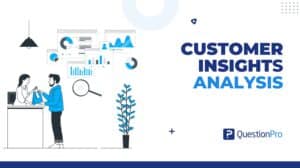
Several plans work together to create a robust, comprehensive, and overall successful market research initiative, and one of the most important pieces is a data collection plan.
A data collection plan describes how your organization’s data will flow from its source to actionable insights. The process of creating this plan will reveal where your data comes from, who has access to it, and how it is collected and stored.
Below, we explain a data collection plan, why you need one, and how you will use it. We also go over the key steps to creating a data-collecting plan to ensure your data is on track to produce actionable insights that drive your business forward.
What is a data collection plan?
A data collection plan is a detailed document outlining the exact steps and sequences to collect data for a project. It is a statistical analysis plan to achieve breakthrough improvement by reducing variation and defects.
A data-collecting plan ensures that data is accurately sent to the organization’s key stakeholders, who will assist them in meeting their data needs. The plan aims to ensure that the data gathered are valid and meaningful.
We need a data-collecting plan to avoid wasting resources on irrelevant or unusable data. By making a plan for collecting data, we can focus on answering specific business-related questions.
Why Do You Need a Data Collection Plan?
Gathering a lot of different kinds of data and looking at them won’t help much if you can’t figure out what they mean. A good plan for collecting data helps save money and time since gathering data without a plan can take a long time. Also, it may not be possible to get all the data when it is needed.
And these are the most important reasons your business needs a plan for collecting data. By making a plan for collecting data, a business can focus on answering specific questions important to the business.
LEARN ABOUT: Pareto Chart
When and how to utilize a data collection plan?
A comprehensive data-collecting plan ensures that the gathered data is useful and well-organized. The plan is utilized to evaluate the existing state of a process or to enhance a project or process. In addition, it is useful during the last phase of a project when generating new metrics and the necessary evaluation procedures.
A proper data collecting plan means taking a systematic approach, including:
- Identify the data to collect.
- How the data will be collected
- Collecting the data
Steps to create a data collection plan
Now, we will explore the steps of a data collection plan to explain how to make one. The plan for gathering data involves 8 steps:
- Identify the questions
The first step in making a data collection plan is to decide what questions we want to answer. Our information has to be useful for the project. These questions should be based on what our process is really like in its current state.
The best way to gather data is to use the SIPOC diagram as a guide. We also have to decide what measurements or metrics we want to use.
- Identify the accessible data
The second step in developing a data collecting plan is to determine what types of data can be collected. A specific piece of data may occasionally provide us with many solutions. Make sure you list all the data points you need to answer the questions on which the project is based.
- Determine how much data is required
A data collection plan’s third step is determining the required data. Write down how much data is required for each bit on the list. Our goal is to gather enough information to do appropriate data analysis and identify patterns and trends.
- Decide how to measure the data
The fourth step in developing a data collection plan is determining how we measure the data. Data can be measured in various ways, such as check sheets, survey responses, etc. The type of data we seek will determine how we measure it.
Contact QuestionPro if you want to measure your data by conducting surveys. QuestionPro is survey software with a wide variety of survey features.
- Determine who will collect the data
The fifth step in developing a data collecting plan is determining who will collect the data. Data can now be collected using automated software. We may need to communicate with the person in charge of the software to ensure that the data is in the proper format.
- Choose the data source
The sixth step is to determine the data sources. Choosing a location or data source is what it signifies. Location does not always mean a physical place. It is the place where the process is at. The data collection plan must specifically state where data must be collected throughout the process.
- Choose whether to measure a sample or the entire population
The seventh step is deciding whether or not to sample the data. It is often impractical to measure a whole data Pre-population. In this situation, we then collect a sample of data. The project team may need to investigate the following question: What should our sampling method and sample size be to produce statistically accurate judgments?
- Determine data display format
The eighth step is to decide how to display the data. We can show data in many ways, such as Pareto Diagrams, Scatter Diagrams, etc.
LEARN ABOUT: Best Data Collection Tools
Conclusion
We gained a strong understanding of the data collection plan, why you need it for your business, and how you use it from the talk above. Additionally, we discussed steps that will assist you in creating your own.
The data collecting plan states what kinds of data need to be collected, how, where, how often, and who is responsible for collecting the data. This document ensures that all relevant employees understand the requirements for data collection methods.
Now you know how to develop a data collection plan for your business. If you need help making your plan, you can contact QuestionPro. QuestionPro is a survey software and data management software that assists in data management and provides real-time data and business insight. To learn more, ask for a free trial now!







